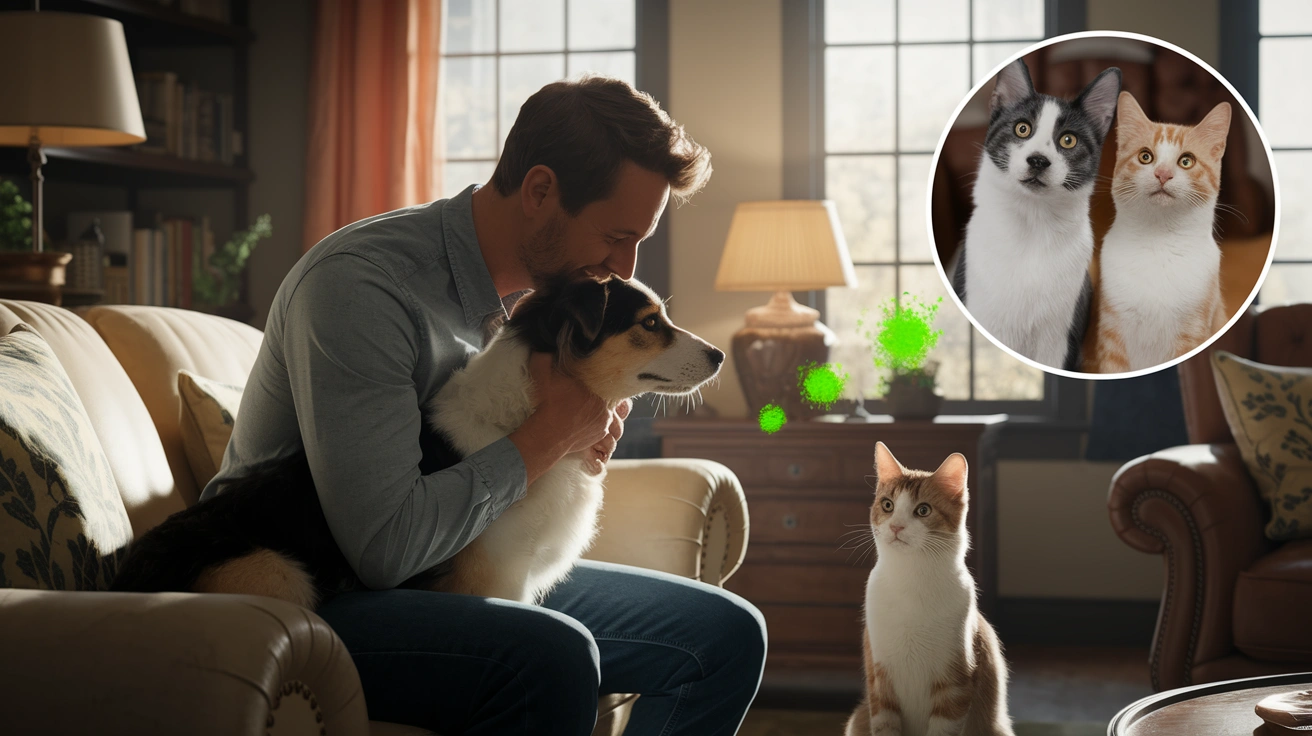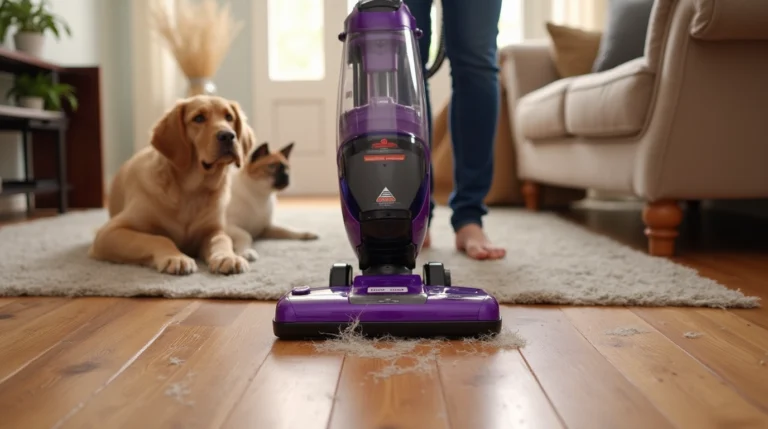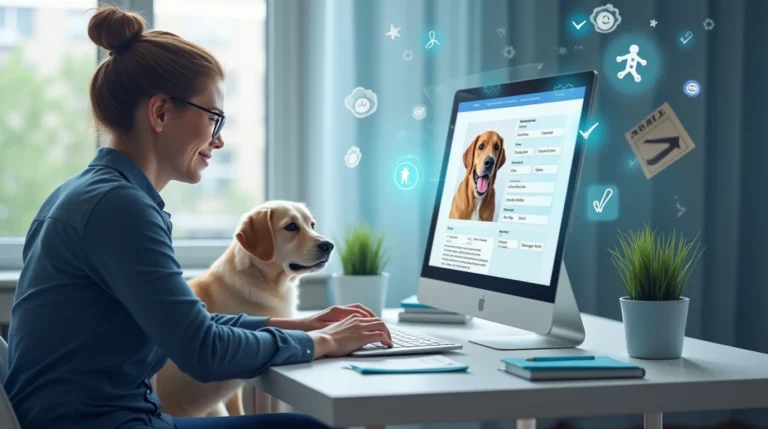Discover the 7 serious consequences of ignoring pet odor eliminator usage and learn fast, effective solutions to protect your home, health, and social life from persistent pet smells.
Pet owners know the joy that furry companions bring to our lives. However, one less pleasant aspect of pet ownership is dealing with the inevitable odors that come along with having animals in our homes. While it may be tempting to become “nose blind” and ignore these smells, failing to address pet odors promptly can lead to several unpleasant consequences—many of which extend beyond just an unpleasant-smelling home.
In this comprehensive guide, we’ll explore the seven most significant effects of neglecting to use pet odor eliminators and provide quick, effective solutions to address each issue. Whether you’re a seasoned pet parent or new to animal companionship, understanding how to manage pet odors is essential for maintaining a healthy, pleasant living environment.

Table of Contents
1. Health Concerns from Lingering Pet Odors
The Hidden Dangers of Ignoring Pet Smells
Pet odors aren’t just unpleasant—they can pose legitimate health risks to both humans and animals in your household. When pet waste, dander, and other organic materials break down, they release ammonia and other compounds that can negatively impact respiratory health.
According to a 2023 study published in the Journal of Indoor Air Quality, homes with untreated pet odors showed ammonia levels up to 5 times higher than recommended safety thresholds. These elevated levels were associated with:
- Increased frequency of respiratory infections
- Worsening of asthma symptoms in sensitive individuals
- Headaches and dizziness in otherwise healthy residents
- Eye and throat irritation
For children, elderly individuals, and those with compromised immune systems, these risks are even higher. The American Respiratory Health Foundation reports that prolonged exposure to ammonia from untreated pet waste can reduce lung function by up to 12% in vulnerable populations.
Fast Fix Solutions
Addressing health concerns from pet odors requires a multi-faceted approach:
- Enzymatic Cleaners: These specialized pet odor eliminators break down odor-causing organic compounds at the molecular level. Look for products containing natural enzymes that specifically target pet waste components.
- Air Purification: Invest in a HEPA air purifier with activated carbon filters designed specifically to capture pet-related airborne particles and neutralize odors.
- Regular Cleaning Schedule: Implement a consistent cleaning routine that includes vacuuming with pet-specific vacuum cleaners that can capture smaller particles than standard models.
- Professional Deep Cleaning: For severe cases, consider professional services that use specialized equipment to remove deeply embedded odors and potential health hazards.
Taking these steps won’t just improve the smell of your home—it can significantly improve indoor air quality and protect your family’s health.
<a id=”permanent-damage”></a>
2. Permanent Damage to Home Surfaces
When Odors Become Structural Problems
Perhaps one of the most financially significant consequences of ignoring pet odors is the potential for permanent damage to your home’s surfaces and structures. Pet urine, in particular, is highly acidic and contains compounds that can cause lasting damage if not promptly and properly addressed.
The National Association of Home Builders estimates that severe pet damage can reduce home value by 5-15%, with flooring being the most commonly affected area. Here’s how different surfaces can be affected when pet odor elimination is neglected:
Hardwood Floors
Pet urine can penetrate the protective finish on hardwood floors, leading to:
- Dark staining that cannot be sanded out
- Warping or buckling as the wood absorbs moisture
- Development of mold in the subfloor
Carpeting
Carpets are particularly vulnerable to pet odor damage:
- Urine can penetrate beyond the carpet into the padding underneath
- Bacteria grow in the warm, moist environment
- Carpet fibers can be permanently discolored
- Recurring crystallization of urine salts continues to release odors when humidity rises
Drywall and Baseboards
These porous materials readily absorb pet odors:
- Urine can wick up walls through capillary action
- Baseboards can become permanently stained and warped
- In severe cases, drywall may need to be cut out and replaced
Subfloors
Perhaps the most serious concern is damage to subfloors:
- Once urine penetrates to this level, complete removal of the affected area may be necessary
- Replacement costs can run into thousands of dollars
- Mold and mildew growth becomes likely
Fast Fix Solutions
Preventing permanent damage requires immediate action:
- Blot Don’t Rub: For fresh accidents, blot up as much liquid as possible immediately using absorbent towels.
- Neutralize Immediately: Apply an enzymatic pet odor eliminator specifically formulated for the surface type. These products break down the urine components rather than simply masking odors.
- Surface-Specific Solutions:
- For hardwood: Special wood-safe enzymatic cleaners that won’t damage finishes
- For carpet: Deep-penetrating solutions that reach underpad areas
- For walls: Cleaners safe for painted surfaces followed by odor-sealing primers
- Protective Barriers: Apply pet-safe sealants to vulnerable surfaces to prevent future penetration of odor-causing substances.
- Containment Strategy: Use washable pee pads, belly bands, or diapers for pets with incontinence issues to prevent accidents before they happen.
For already damaged areas, more intensive intervention may be necessary:
- Carpet may require professional hot water extraction or complete replacement
- Affected subflooring might need treatment with specialized sealants or replacement
- Walls may need odor-blocking primer and fresh paint
<a id=”decreased-value”></a>
3. Decreased Property Value
The Financial Impact of Pet Odors
Whether you’re planning to sell your home in the near future or simply want to maintain your investment, ignoring pet odors can have significant financial consequences.
Real estate professionals consistently rank pet odors among the top factors that decrease home value and marketability. According to the National Association of Realtors’ 2024 report on home selling factors:
- Homes with noticeable pet odors typically sell for 3-7% less than comparable odor-free properties
- Properties with pet odors stay on the market an average of 30-45 days longer
- 88% of real estate agents report that buyers are less likely to make offers on homes with noticeable pet smells
- 78% of potential buyers identify pet odors as a “deal-breaker” when house hunting
Even if you’re not planning to sell soon, this decreased value affects your home equity and refinancing options. Mortgage appraisers routinely note odor issues in their reports, potentially affecting loan terms.
Fast Fix Solutions
Protecting your property value requires consistent odor management:
- Whole-Home Odor Assessment: Invite a trusted friend (who doesn’t live with you) to give honest feedback about how your home smells, as pet owners often become desensitized.
- Strategic Pet Odor Eliminator Application: Focus on:
- High-traffic pet areas
- Locations of previous accidents
- Areas with soft surfaces that trap odors
- HVAC vents and returns that can distribute odors
- Pre-Showing Protocol: If selling your home, implement these steps before showings:
- Use pet-specific air fresheners that neutralize rather than mask odors
- Temporarily relocate litterboxes to garages or outdoors
- Steam clean carpets with enzyme-based products
- Run air purifiers in formerly pet-occupied rooms
- Documentation of Solutions: Keep records of professional cleaning services, odor remediation, and replacement of affected materials to reassure potential buyers.
- Professional Odor Inspection: Consider hiring an odor detection service that uses specialized equipment to identify hidden problem areas before listing your home.
By implementing consistent pet odor elimination strategies, you protect not just your comfort but also your financial investment in your home.
<a id=”social-embarrassment”></a>
4. Social Embarrassment and Isolation
The Social Impact of Pet Odors
While the physical and financial impacts of ignoring pet odors are significant, the social consequences can be equally distressing. Many pet owners report feeling embarrassed about home odors and may gradually reduce social interactions as a result.
A 2024 survey by the Pet Owners Association found that:
- 62% of pet owners have felt embarrassed about pet odors in their home
- 41% have avoided inviting guests over due to concerns about pet smells
- 28% report receiving negative comments about odors from visitors
- 17% have experienced relationship tension with household members over pet odors
This social impact can lead to a cycle of isolation that affects quality of life. Furthermore, professional relationships may suffer if colleagues or work connections associate you with pet odors that transfer to clothing or personal items.
Fast Fix Solutions
Addressing the social impacts of pet odors requires both physical cleaning and psychological approaches:
- Pre-Visit Quick Fixes:
- Open windows 30 minutes before guests arrive
- Use fabric refresher sprays containing pet odor eliminators on furniture and curtains
- Set out odor-absorbing products in discrete locations
- Run air purifiers on high setting
- Designated Pet Areas: Create specific zones for pets that can be more intensively cleaned before social gatherings.
- Guest-Ready Kits: Maintain supplies for quick odor elimination when unexpected visitors arrive:
- Fast-acting enzymatic sprays
- Odor-neutralizing candles or diffusers
- Fabric refreshers
- Air purifying bags
- Social Confidence Building: Reduce anxiety by regularly asking trusted friends for honest feedback about odor levels.
- Professional Help for Severe Cases: For persistent odor issues causing social withdrawal, consider:
- Professional deep cleaning services
- Consultation with veterinarians about potential medical causes of strong pet odors
- Behavioral support for pets with marking or elimination issues
Remember that most people understand that having pets comes with certain challenges. Addressing odors proactively allows you to maintain both your beloved pets and your social connections.
<a id=”behavioral-changes”></a>
5. Behavioral Changes in Your Pets
When Odors Affect Pet Behavior
Many pet owners don’t realize that failing to eliminate pet odors can actually create a cycle of problematic behavior in their animals. This occurs through several mechanisms:
Marking Behavior: When pets detect their previous elimination spots (even if you can’t smell them), they’re likely to mark the same areas repeatedly. Without proper pet odor eliminator use:
- Dogs are 70% more likely to have repeat accidents in the same locations
- Cats may avoid litterboxes that aren’t properly deodorized
- Multiple pets may compete for marking territories within your home
Stress Responses: Research from the Animal Behavior Institute indicates that lingering odors can create confusion and anxiety in pets about appropriate elimination areas:
- Cats may develop litterbox aversion
- Dogs may show signs of anxiety including excessive licking or pacing
- Both species may develop stress-related digestive issues
Training Regression: Even well-trained pets can backslide when odor cues remain:
- Previously housetrained animals may suddenly have accidents
- Training efforts become inconsistent and confusing
- Pets receive mixed signals about appropriate behavior
This creates a frustrating cycle where odors lead to behavior problems, which create more odors, requiring more intensive intervention.
Fast Fix Solutions
Breaking the odor-behavior cycle requires addressing both the existing odors and the behavioral components:
- Complete Odor Elimination: Use pet odor eliminators containing enzymes that completely break down the molecular structure of waste, leaving no detectable scent for your pet:
- Black light inspection can reveal hidden accident areas
- Focus on complete saturation of affected areas
- Allow proper dwell time for enzymatic products
- Positive Reinforcement: Retrain pets to appropriate elimination areas:
- Reward proper elimination in designated spots
- Temporarily restrict access to previously soiled areas after cleaning
- Never punish for accidents, which can increase anxiety
- Environmental Modification:
- Use pet-safe deterrent sprays in previously soiled areas
- Provide additional litterboxes in multi-cat households
- Create positive associations with proper elimination locations
- Veterinary Consultation: For sudden changes in elimination habits, consult your veterinarian to rule out:
- Urinary tract infections
- Digestive disorders
- Age-related incontinence
- Anxiety disorders
By properly eliminating odors and addressing behavioral components, you create clear communication with your pet about appropriate elimination behaviors.
<a id=”clothing-contamination”></a>
6. Clothing and Fabric Contamination
The Pervasive Nature of Pet Odors
One of the most insidious effects of neglecting pet odor eliminators is how these smells transfer to clothing, bedding, and other fabrics in your home. Unlike surface odors, fabric contamination can follow you outside your home, potentially affecting personal and professional interactions.
Fabric contamination occurs through several mechanisms:
- Direct contact with pets who carry odors in their fur
- Airborne odor particles that settle into fibers
- Transfer from furniture and other soft surfaces
- Lingering odors in washing machines that haven’t been properly maintained
A 2023 consumer study found that 47% of pet owners reported discovering pet odors on their clothing after leaving home, while 33% had received comments about pet odors from colleagues or acquaintances.
Fast Fix Solutions
Addressing fabric contamination requires specialized approaches:
- Laundry Additives: Use pet odor eliminator products specifically formulated for laundry:
- Enzyme-based laundry additives break down protein-based pet odors
- Oxygen boosters help eliminate embedded odors
- Vinegar rinses can neutralize alkaline residues from pet urine
- Washing Machine Maintenance:
- Run monthly cleaning cycles with machine cleaners to prevent odor transfer
- Leave the door open between uses to prevent mildew growth
- Clean the gasket and dispensers regularly on front-loading machines
- Fabric-Specific Treatments:
- For delicate fabrics: Pre-soak with enzymatic solutions before gentle washing
- For sturdy fabrics: Hot water washing with odor-specific detergents
- For non-washable items: Steam cleaning with odor-neutralizing additives
- Prevention Strategies:
- Maintain pet-free zones for storing work clothes
- Use washable covers on furniture that can be frequently laundered
- Keep closet doors closed to minimize exposure to airborne odors
- Consider using garment bags for protection
- Professional Services: For valuable or difficult items:
- Specialized dry cleaning services with pet odor expertise
- Ozone treatment for severe contamination
- Professional upholstery cleaning with pet-specific treatments
By implementing these solutions, you can prevent the embarrassment of carrying pet odors into professional and social situations outside your home.
<a id=”allergic-reactions”></a>
7. Intensification of Allergic Reactions
The Allergy-Odor Connection
The relationship between pet odors and allergic reactions is often misunderstood. While many assume they’re allergic to pet fur, the true allergens are proteins found in pet dander, saliva, and urine—the very substances that cause the most persistent odors.
When pet odor eliminators aren’t used effectively, these allergen-containing substances accumulate in the environment, intensifying allergic responses. According to the American Academy of Allergy, Asthma & Immunology:
- Pet allergen levels in homes without proper odor management can be 100-1000 times higher than threshold levels for triggering allergic reactions
- These allergens can remain active in the environment for months or even years if not properly eliminated
- Even homes without current pets can have sufficient allergen loads to trigger reactions in sensitive individuals
Common reactions include:
- Respiratory symptoms: coughing, wheezing, congestion
- Skin reactions: hives, eczema flares, itching
- Eye symptoms: watering, redness, swelling
- Systemic reactions: fatigue, headaches
Fast Fix Solutions
Managing the allergen-odor connection requires a comprehensive approach:
- Targeted Allergen Removal: Use pet odor eliminators that specifically address allergen proteins:
- Products containing specific enzyme blends that break down proteins
- Anti-allergen sprays that denature protein allergens
- Steam cleaning at temperatures above 130°F to denature allergens
- Filtration Systems:
- HEPA air purifiers can capture airborne allergen particles
- Vacuum cleaners with sealed HEPA systems prevent allergen redistribution
- HVAC filters rated for allergen capture (MERV 11 or higher)
- Regular Grooming Protocol:
- Frequent pet bathing with dander-reducing shampoos
- Regular brushing (ideally outdoors) to remove loose fur and dander
- Professional grooming services for deep cleaning
- Environmental Controls:
- Washable slipcovers for furniture
- Allergen-barrier bedding encasements
- Removal of allergen-trapping items like heavy drapes and shag carpeting
- Medical Support:
- Consultation with allergists for severe reactions
- Appropriate medication to manage symptoms
- Possible immunotherapy for long-term management
By addressing both odors and allergens simultaneously, you create a healthier environment for both allergic and non-allergic household members.
<a id=”recommended-products”></a>
Recommended Pet Odor Eliminators on Amazon
Finding the right pet odor eliminator products can make all the difference in addressing the issues outlined above. Here are four highly-rated options available on Amazon that target different aspects of pet odor management:
1. EnzyBrite Deep-Clean Pet Odor Eliminator
This professional-strength enzymatic cleaner breaks down the molecular structure of pet waste, removing both odors and stains from multiple surfaces. The three-enzyme formula works on urine, feces, vomit, and other organic matter.
2. OdorZap Fabric & Upholstery Treatment
Specifically formulated for soft surfaces like couches, carpets, and bedding, this product neutralizes embedded odors and creates a protective barrier against future odor absorption.
3. PureFresh HEPA Air Purifier with Pet Filter
This specialized air purification system combines HEPA filtration with activated carbon specifically calibrated to capture pet dander and neutralize pet-related odors.
4. LaundryPure Pet Bedding & Clothing Additive
An enzyme-based laundry booster designed specifically to eliminate pet odors from washable fabrics, including pet beds, your clothing, and household linens.
<a id=”faqs”></a>
Frequently Asked Questions About Pet Odor Eliminators
How do enzymatic pet odor eliminators work?
Enzymatic cleaners contain biological catalysts that break down specific types of organic matter. For pet messes, these typically include protease (breaks down proteins), amylase (breaks down starches), and lipase (breaks down fats). These enzymes convert the odor-causing compounds into smaller, non-odorous substances that can be easily rinsed away.
Are pet odor eliminators safe around children and pets?
Many modern pet odor eliminators are formulated to be safe around both children and pets when used as directed. Look for products labeled as non-toxic and free from harsh chemicals like ammonia or bleach. Always keep cleaning products stored securely and follow manufacturer instructions regarding wait times before allowing pets and children back into cleaned areas.
How long do pet odors typically last if untreated?
Without proper treatment, pet odors can persist for years. Urine, in particular, contains uric acid crystals that can remain dormant and reactivate when exposed to humidity, causing odors to return long after the original accident. This is why using specific pet odor eliminators rather than general cleaners is essential.
Can I mix different pet odor eliminator products?
Mixing cleaning products is generally not recommended as it can reduce effectiveness or create potentially harmful chemical reactions. Instead, choose products designed for specific applications (carpet, hard surfaces, laundry) and use them according to manufacturer directions.
How can I find hidden pet accidents causing odors?
UV blacklights (often called pet urine detectors) can reveal urine stains not visible to the naked eye. These specialized lights cause the phosphorus and proteins in dried urine to glow, helping you identify problem areas that need treatment.
Will air fresheners eliminate pet odors?
Standard air fresheners only mask odors temporarily rather than eliminating them. For effective odor control, you need products that neutralize or break down the odor-causing compounds at their source. Air purifiers with activated carbon can help remove odor particles from the air, but surface treatment is still necessary.
How can I prevent my pet from returning to the same accident spot?
After thoroughly cleaning with an enzymatic pet odor eliminator, you can apply pet deterrent sprays to discourage remarking. Additionally, changing the function of the area (placing furniture or pet beds over the spot) and positive reinforcement training can help break the habit.
Ready to explore more solutions for pet care challenges? Check out BlithePet‘s comprehensive guides on everything from pet odor management to training techniques. Our expert recommendations and in-depth articles will help you create a happier, healthier environment for both you and your beloved pets.
Conclusion
While the consequences of ignoring pet odors can be significant—from health concerns to property damage and social impacts—the good news is that all of these issues can be effectively managed with the right approach. By incorporating quality pet odor eliminators into your regular cleaning routine and addressing problems promptly when they occur, you can enjoy all the benefits of pet companionship without the downside of persistent odors.
Remember that successful odor management is a combination of:
- Prevention through regular pet grooming and hygiene
- Prompt action when accidents occur
- Using the right products for specific surfaces and materials
- Addressing both the odors and any behavioral issues contributing to them
With consistent attention and the right tools, you can maintain a fresh, welcoming home that both human and animal family members will enjoy.
Have you dealt with challenging pet odors in your home? Share your experience and solutions in the comments below!





